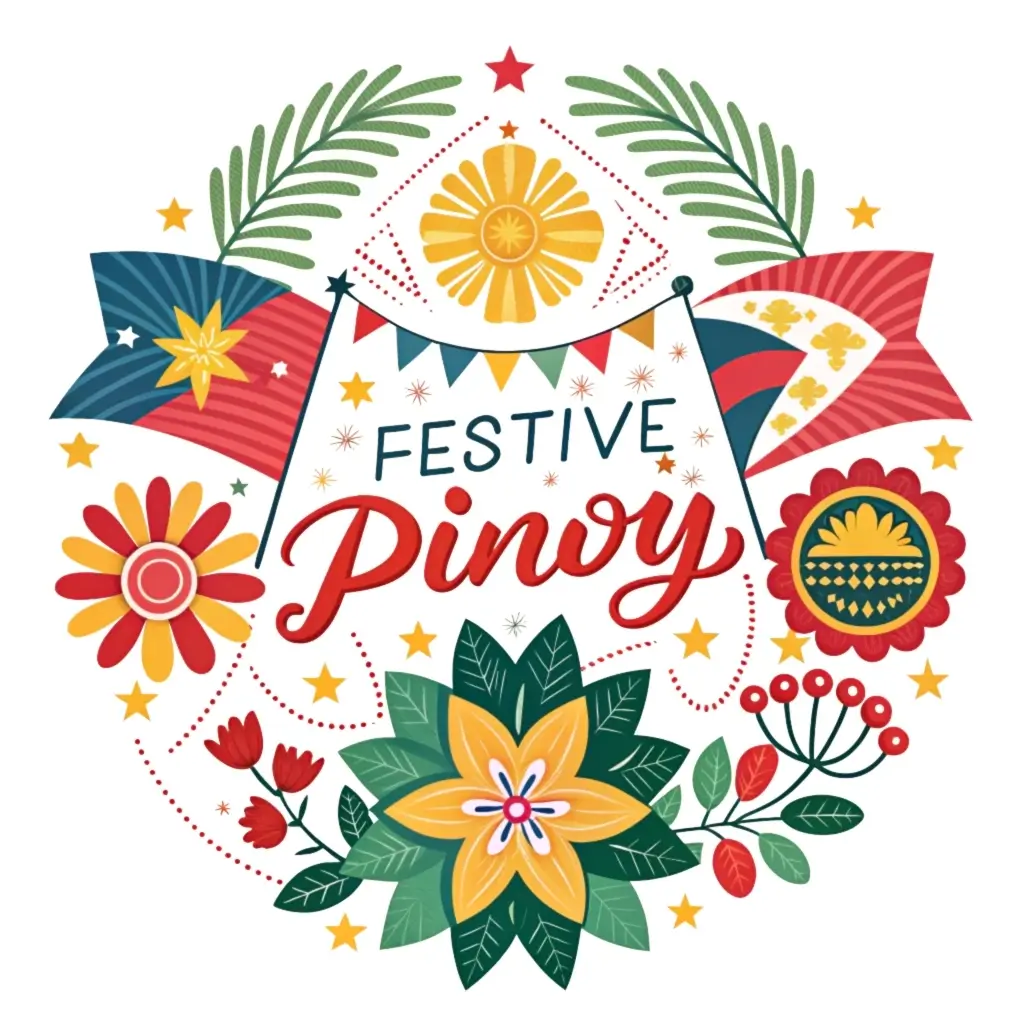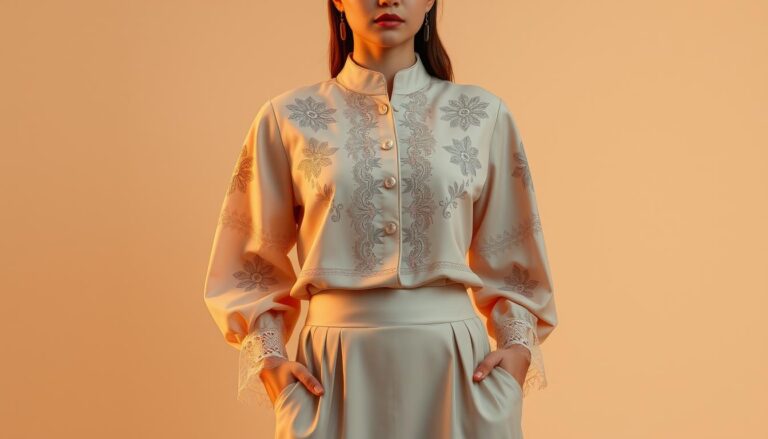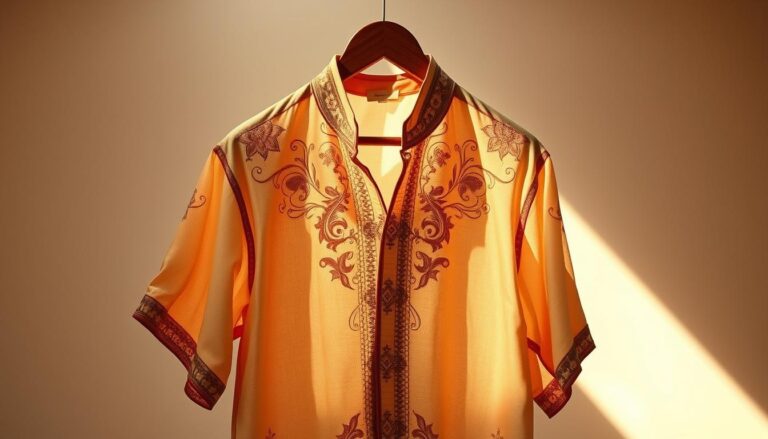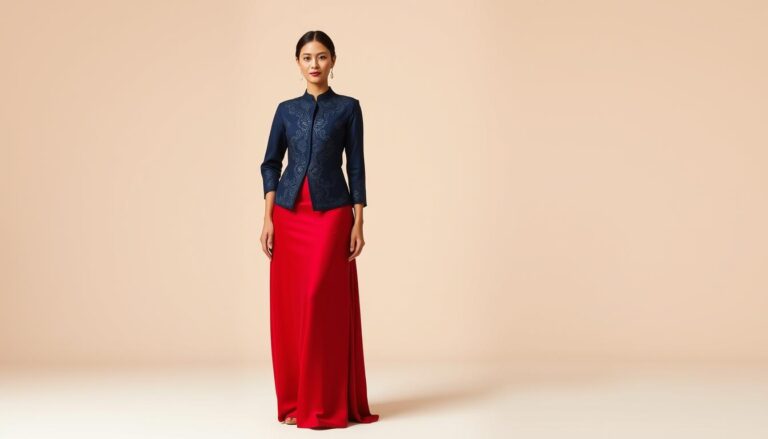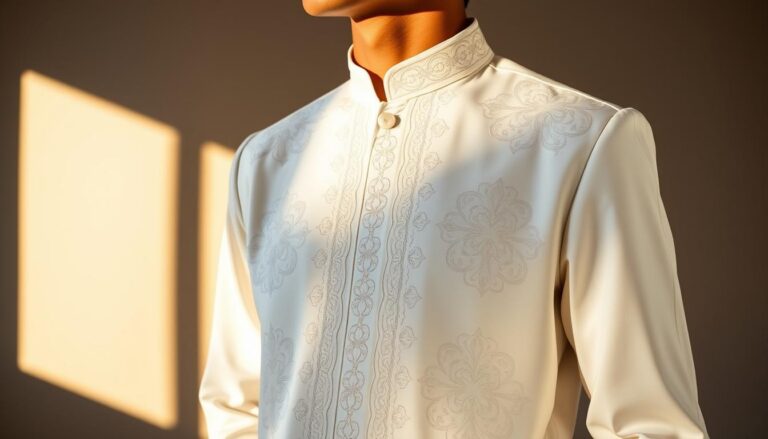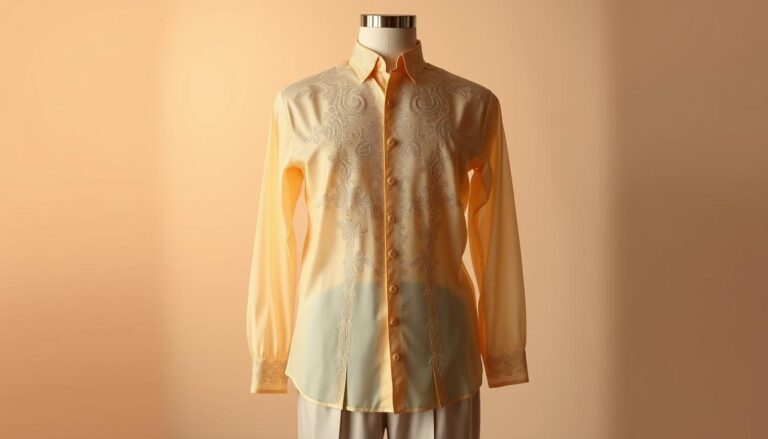Characteristics of Quality Barong Tagalog & Filipiniana
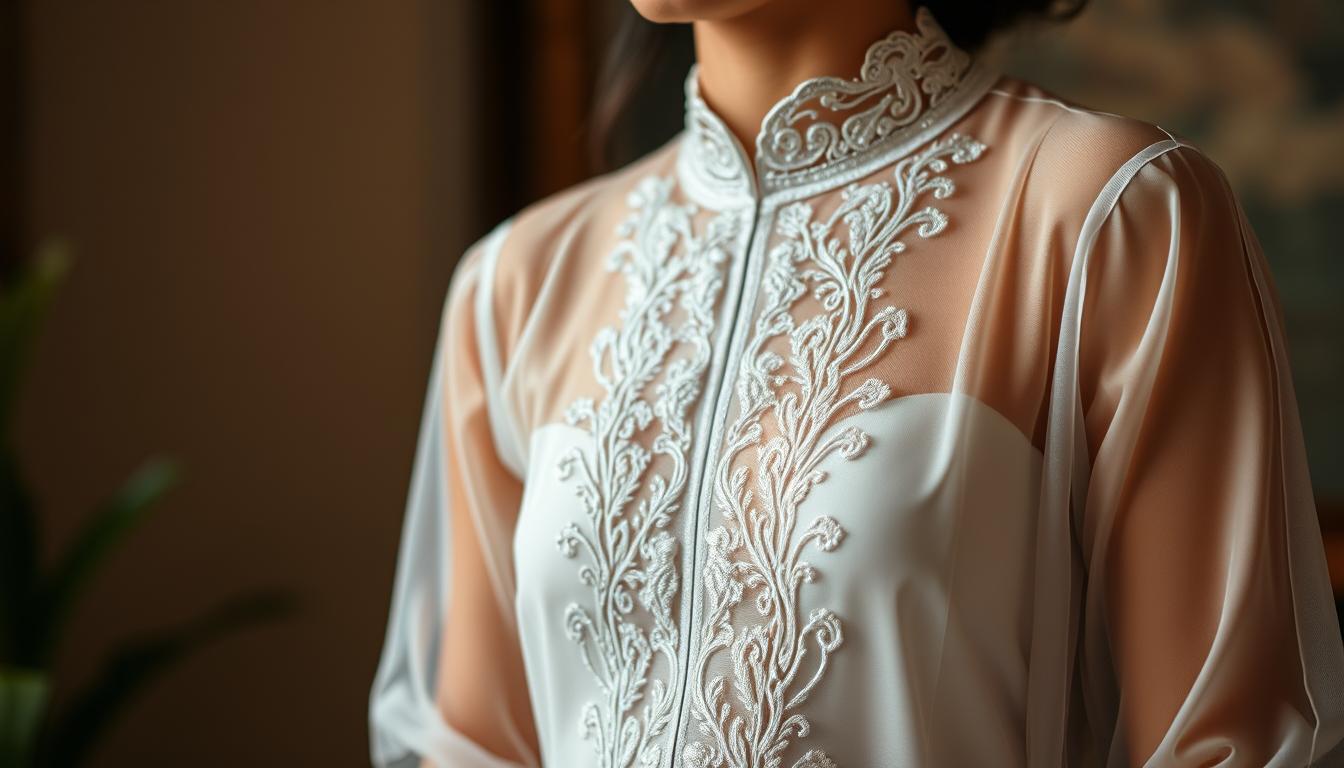
When you think of timeless elegance rooted in culture, few garments capture this blend like the traditional Filipino barong. Woven from sheer, breathable fabrics like piña (pineapple fiber) or jusi, this iconic attire balances delicate craftsmanship with enduring symbolism. Originally worn as formal wear during colonial times, it has evolved into a versatile piece embraced at weddings, festivals, and modern events.
What defines its quality? First, the materials matter. Authentic pieces use handwoven fibers known for their lightweight texture and subtle sheen. Piña fabric, for example, requires meticulous extraction from pineapple leaves—a process that adds exclusivity. Similarly, intricate embroidery featuring floral patterns or geometric motifs reflects artisanal skill passed through generations.
Modern adaptations now include colored versions, offering fresh versatility while preserving heritage details like the mandarin collar and relaxed fit. These updates show how tradition adapts without losing its soul. Whether paired with formal trousers or contemporary accessories, the garment remains a proud emblem of Filipino identity.
Key Takeaways
- Rooted in history, the barong symbolizes Filipino pride and craftsmanship.
- Premium fabrics like piña and jusi ensure breathability and durability.
- Hand-stitched embroidery adds artistic value and cultural storytelling.
- Modern designs incorporate colors while maintaining traditional silhouettes.
- Proper lining and undershirts preserve the garment’s polished appearance.
Historical and Cultural Heritage of Barong Tagalog and Filipiniana
Long before it became a national emblem, this garment began as a humble expression of Filipino ingenuity. Early versions, crafted from abacá fibers, served as practical clothing for daily life. The barong tagalog evolved into a canvas for cultural exchange, absorbing influences from traders and colonizers while retaining its distinct identity.
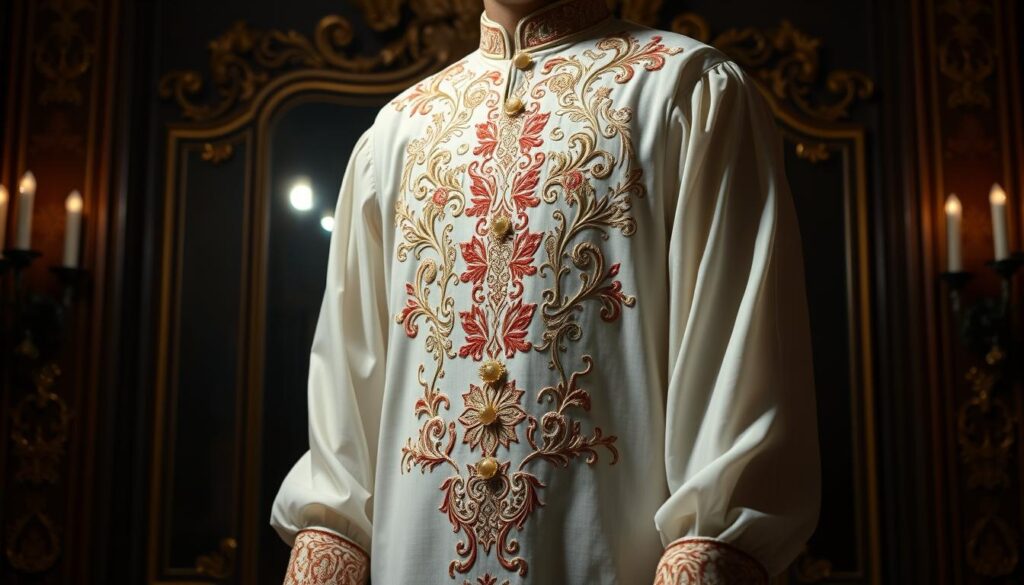
Pre-colonial Roots and Colonial Transformations
Pre-colonial Filipinos wore collarless shirts called baro, paired with woven skirts or trousers. Spanish rule reshaped its design, introducing sheer fabrics like piña and jusi. These materials, lighter than European wool, suited the tropical climate while showcasing intricate embroidery techniques.
Colonial laws required locals to wear translucent garments to prevent hiding weapons. This unintentionally elevated the barong as a symbol of resilience. Artisans incorporated floral motifs and geometric patterns, blending indigenous artistry with foreign aesthetics.
Threads of Tradition and Modern Meaning
Beyond its visual appeal, every stitch carries cultural weight. President Ramón Magsaysay famously wore a barong tagalog during his 1953 inauguration, signaling a new era of Filipino pride. Today, it remains essential at weddings and state events, symbolizing unity and heritage.
From pineapple-leaf fibers to silk blends, the garment adapts while honoring its past. Its journey mirrors the Philippines’ history—a tapestry woven through conquest, creativity, and enduring pride.
Essential Characteristics of Quality Barong Tagalog & Filipiniana
At the heart of Filipino sartorial excellence lies two elements: breathable fabrics and storytelling craftsmanship. These features transform the barong tagalog from ordinary attire into a wearable heirloom.
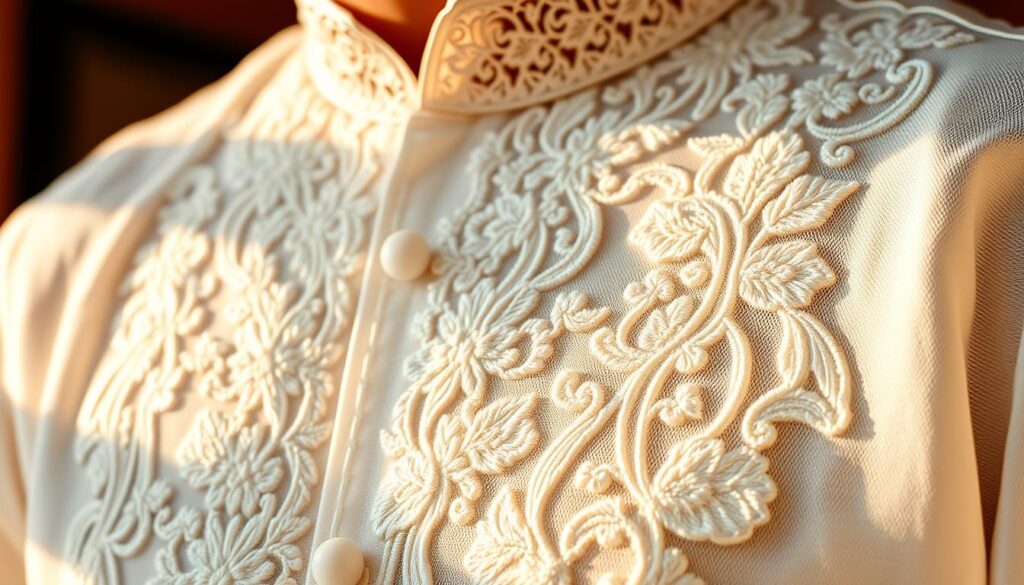
Sheer Fabrics and Lightweight Materials
Premium piña (pineapple leaf fiber) and jusi (silk blend) define authentic barong designs. Woven by hand, these textiles offer a featherlight feel while maintaining durability. Their translucent quality allows airflow—perfect for tropical climates—without sacrificing elegance.
Creating piña fabric involves extracting fibers from pineapple leaves, a weeks-long process. This labor-intensive method ensures each garment carries exclusivity. Modern blends now incorporate cotton or polyester for easier care, but traditionalists favor natural fibers for their unmatched texture.
Intricate Embroidery and Signature Details
Hand-stitched embroidery elevates the barong tagalog into art. Skilled artisans use techniques like calado (openwork stitching) to create floral or geometric patterns. Each motif often reflects regional stories or ancestral symbols.
Contemporary barongs balance heritage with fresh design touches. Think minimalist stitching for casual events or metallic threads for weddings. These updates prove tradition thrives when paired with innovation.
From fabric to finish, every detail honors the traditional Filipino spirit. Whether worn at graduations or galas, a quality piece remains timeless yet adaptable—a true testament to cultural pride.
Fabric Choices and Modern Adaptations
The foundation of any remarkable barong tagalog lies in its fabric—a choice that bridges heritage and innovation. While traditional textiles like piña remain cherished, modern blends now offer fresh possibilities without sacrificing cultural authenticity.
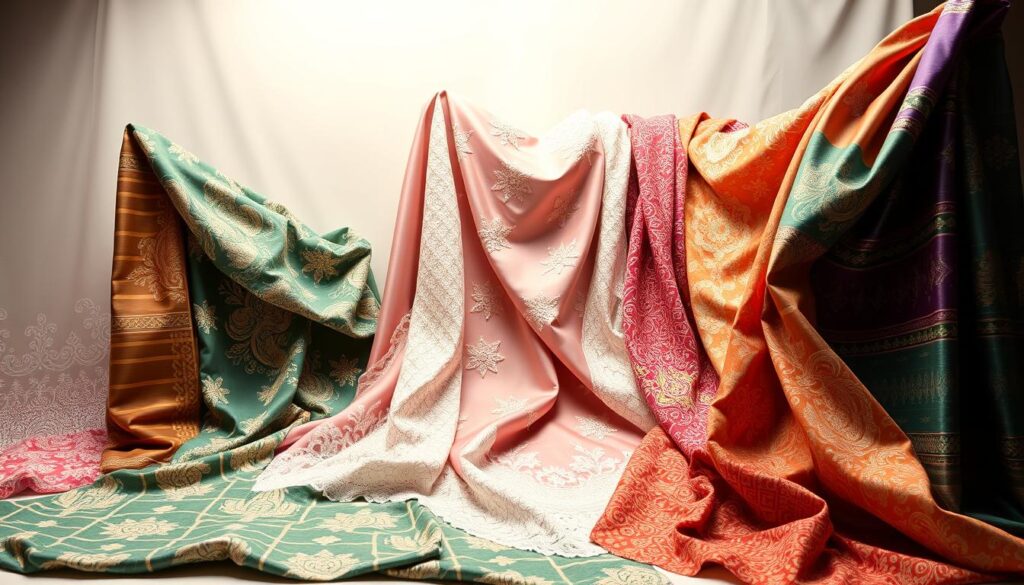
From Traditional Piña to Contemporary Blends
Natural fibers like pineapple-leaf-derived piña define classic designs. These breathable textiles, woven by hand, provide a lightweight feel ideal for tropical climates. Paired with jusi (a silk-abacá blend), they create garments that drape elegantly while showcasing intricate embroidery.
Today’s artisans blend tradition with practicality. Polyester-silk mixes mimic piña’s sheen but resist wrinkles, perfect for travel or outdoor weddings. Cotton-linen hybrids offer casual versatility, allowing the garment to transition from formal events to business settings effortlessly.
Modern materials also expand color options beyond ivory and white. Deep navy, burgundy, and even pastel hues now grace contemporary designs. These updates let wearers express individuality while honoring the barong’s timeless silhouette.
Whether choosing airy piña for its artisanal legacy or durable blends for everyday wear, each fabric tells a story. The right selection balances comfort, occasion, and personal style—proving tradition evolves without losing its soul.
Design Elements: Embroidery, Fit, and Details
Every stitch in a barong tagalog tells a story—a blend of artistry and purpose that defines Filipino craftsmanship. From collar to hemline, each element merges cultural identity with wearability, creating garments that command attention while feeling effortless.
Silhouettes That Speak Volumes
The mandarin collar remains a cornerstone of this garment, offering a refined neckline that nods to historical Chinese influences. Paired with a tailored yet relaxed fit, it ensures comfort without compromising elegance. Modern designers often adjust sleeve lengths or waistlines for sharper lines, adapting to fashion trends while preserving the classic drape.
Traditional embroidery often features floral vines or geometric patterns, hand-stitched to reflect regional artistry. Today’s versions might incorporate abstract motifs or metallic threads for weddings and formal events. These updates keep the barong relevant across generations.
Where Heritage Meets Innovation
Balancing old and new requires precision. Artisans might use lighter fabrics for tropical climates but retain time-honored stitching techniques. Some barongs now feature minimalist designs for business occasions, proving versatility is key.
Details matter. Reinforced seams prevent fraying, while breathable linings enhance comfort during long celebrations. Whether worn at a festival or a board meeting, thoughtful design ensures the barong tagalog remains both striking and practical—a true masterpiece in motion.
Wearing Your Barong Tagalog for Various Occasions
Mastering the art of styling this iconic garment ensures you honor tradition while adapting to modern settings. Whether attending a wedding or business meeting, thoughtful choices in fabric, fit, and accessories elevate your look.
Tips for Formal, Business, and Cultural Events
For formal occasions like weddings, opt for classic white or ivory barong tagalog in piña or jusi. Pair with slim-fit black trousers and leather loafers. Choose a collarless undershirt in matching tones to avoid visible bulk under sheer fabrics.
Business settings demand subtlety. Try muted colors like gray or navy, paired with tailored slacks. Ensure sleeves end at the wrist and the hem sits just below the hips. Modern blends like silk-jusi resist wrinkles during long meetings.
Accessorizing for a Modern Look
Elevate your attire with minimalist cufflinks or a sleek watch. For cultural festivals, experiment with embroidered patterns in bold threads. Avoid boutonnieres—they can snag delicate fabrics.
Contemporary twists include pairing a colored barong with printed socks or loafers. Balance tradition with innovation: a mandarin collar stays timeless, while updated sleeve lengths add freshness. Store your garment flat to preserve intricate embroidery between wears.
Conclusion
From pineapple-leaf fiber to silk blends, the barong tagalog carries centuries of artistry in every thread. Its journey—from colonial-era mandates to modern runways—reveals a garment shaped by resilience and reinvention. Whether crafted from airy piña or wrinkle-resistant polyester, each piece honors meticulous embroidery techniques passed through generations.
Today’s designs balance heritage with fresh colors and minimalist patterns, making them ideal for weddings, business events, or cultural celebrations. The mandarin collar and relaxed fit remain timeless, while updated silhouettes cater to contemporary fashion tastes. For men seeking versatility, darker hues or metallic threads offer bold alternatives to classic ivory.
Choosing a barong isn’t just about style—it’s a celebration of identity. Every stitch whispers stories of Filipino ingenuity, from handwoven fabrics to symbolic motifs. Whether worn at a gala or a family gathering, this attire bridges past and present, proving tradition thrives when woven with innovation.
To wear a barong tagalog is to carry a nation’s pride. It’s more than dress—it’s a living testament to craftsmanship, culture, and the enduring spirit of the Philippines.
